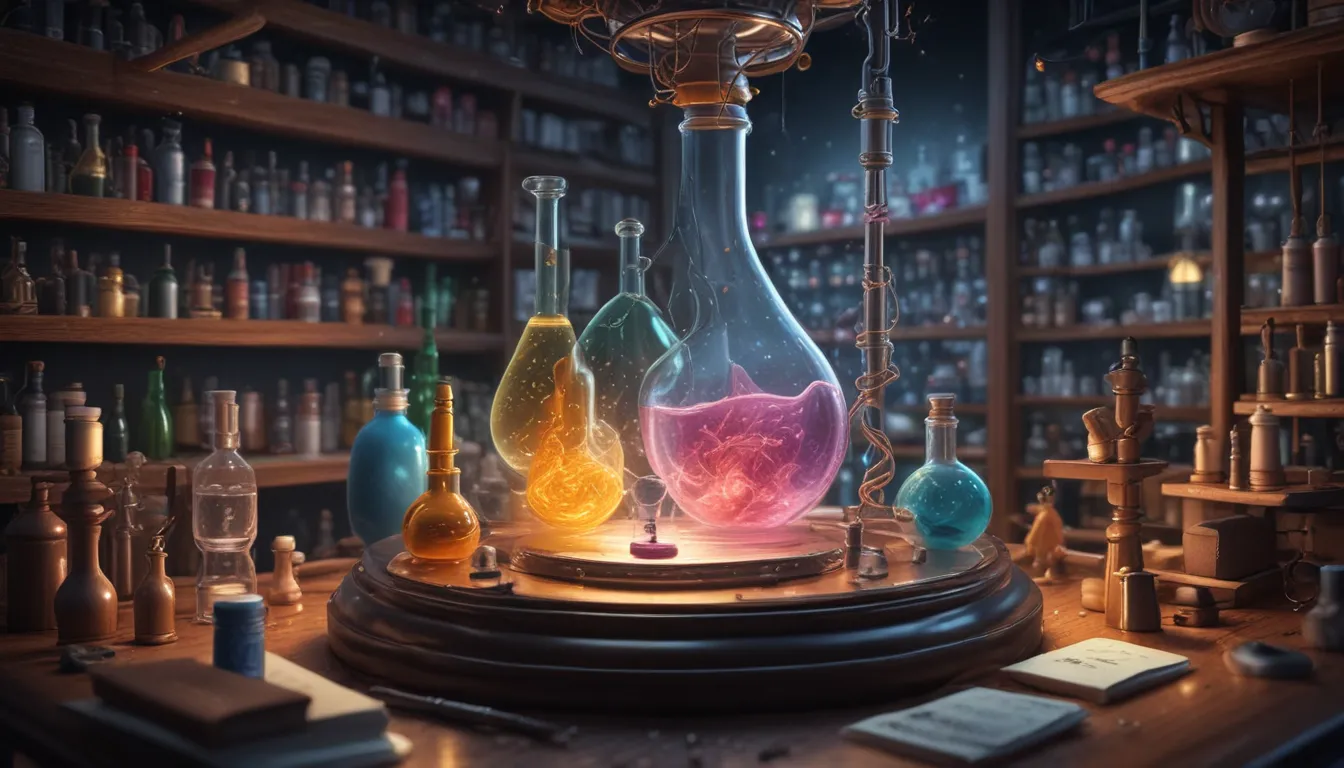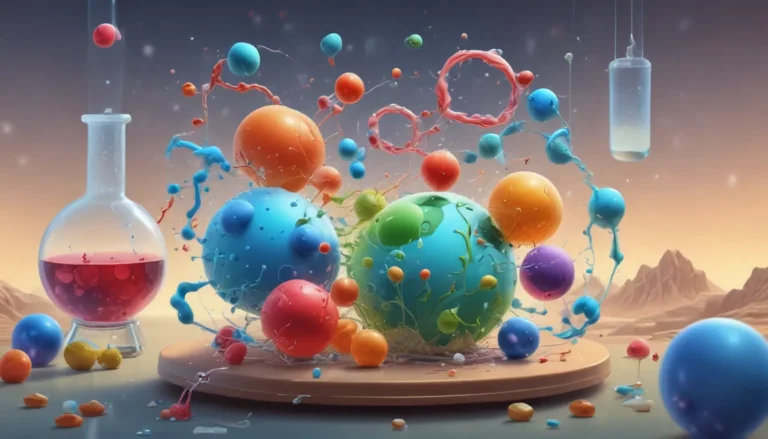A Note About Images: The images used in our articles are for illustration purposes only and may not exactly match the content. They are meant to engage readers, but the text should be relied upon for accurate information.
Welcome to the fascinating world of computational chemistry, where the marriage of chemistry and computer science leads to groundbreaking discoveries and scientific advancements. By harnessing the power of computers and sophisticated algorithms, computational chemistry unravels complex chemical systems, predicts molecular interactions, and drives innovation in various scientific fields.
The Fusion of Chemistry and Computer Science
The integration of chemistry and computer science in computational chemistry opens up a realm of possibilities for understanding and manipulating matter at a molecular level. With advanced algorithms and simulations, scientists gain unprecedented insights into chemical phenomena and discover molecules with unparalleled precision.
Transforming Drug Discovery
In the realm of drug discovery, computational chemistry has truly revolutionized the game. By simulating interactions between drug candidates and target proteins, researchers can identify promising compounds and optimize their properties before costly laboratory experiments. This accelerated process leads to the development of more efficient and cost-effective treatments for a wide range of diseases.
Journey into Molecular Modeling and Simulation
Molecular modeling and simulation are at the core of computational chemistry’s applications. Through powerful algorithms, scientists construct three-dimensional models of molecules, delving into their behavior under varying conditions. This ability enhances our understanding of molecular structure, predicts chemical reactions, and catalyzes the design of efficient catalysts.
Predicting the Unpredictable – Chemical Reactions
Computational chemistry plays a pivotal role in predicting chemical reactions by utilizing quantum mechanical calculations and advanced algorithms. By accurately determining reaction mechanisms, energy barriers, and rate constants, scientists can design new chemical processes and optimize existing ones for peak efficiency.
Illuminating Protein Structures
Proteins play a crucial role in biological processes, making the understanding of their structures indispensable. Computational chemistry techniques like molecular dynamics simulations shed light on protein folding, stability, and interactions, fueling the development of targeted therapies for various diseases.
Decoding Catalysts and Reaction Mechanisms
In the realm of catalysts and reaction mechanisms, computational chemistry offers a gateway to exploration. Through simulations, researchers can identify efficient catalysts, unravel underlying reaction pathways, and design greener, more sustainable chemical processes.
A Leap in Materials Discovery
Computational chemistry fast-tracks the discovery and development of new materials by leveraging quantum mechanical calculations with machine learning algorithms. This innovative approach predicts material properties before synthesis, leading to advancements in energy storage, catalysis, and electronic devices.
Unveiling Chemical Secrets in Extreme Environments
With computational chemistry, scientists can delve into chemical phenomena under extreme conditions, offering insights into reactions within the Earth’s core, interstellar space, and industrial processes. By simulating high pressures, temperatures, and other environments, new discoveries are made.
Delving into Biochemical Processes
Computational chemistry serves as a beacon for understanding biochemical processes at a molecular level. By simulating enzyme-substrate interactions, protein folding, and DNA dynamics, scientists uncover the mechanisms behind biological functions, with implications for drug design and personalized medicine.
Navigating the Virtual Realm of Molecules
In the quest for new drug candidates, computational chemistry takes the lead in virtual screening. By sifting through vast databases of molecules to identify promising lead compounds, researchers streamline the drug discovery process, saving time and resources.
Crafting Catalysts for Efficiency
Efficient catalyst design is a cornerstone of computational chemistry. By studying the electronic structure and reactivity of catalysts, scientists optimize their performance, leading to sustainable processes with reduced energy consumption and waste production.
Predicting Quantum Mechanical Marvels
Computational chemistry’s prowess extends to predicting quantum mechanical properties of molecules, guiding experimentalists in understanding molecular orbitals, bond energies, and spectroscopic data. These predictions serve as valuable tools in manipulating matter at the atomic level.
Modeling the Future of Electrochemistry
In the realm of electrochemical systems, computational chemistry models electron transfer processes, electrocatalysis, and electrode interfaces. By designing more efficient electrochemical devices like batteries and fuel cells, researchers contribute to renewable energy technologies and sustainable energy storage solutions.
Embarking on a Journey in Supramolecular Chemistry
Supramolecular chemistry thrives with the aid of computational chemistry. By modeling molecular self-assembly, predicting stability, and exploring interactions, scientists design functional materials tailored for applications in drug delivery, sensing, and nanotechnology.
Docking into the World of Drug Design
Molecular docking, a computational chemistry technique, plays a vital role in drug design. By simulating interactions between drug-like molecules and target proteins, researchers optimize chemical structures for enhanced efficacy, expediting the drug discovery process.
Conclusion: Embracing the Wonders of Computational Chemistry
The realm of computational chemistry is a treasure trove of discoveries and advancements that shape our understanding of chemical systems. Through algorithms, simulations, and modeling techniques, scientists unveil new insights into molecular behavior, driving progress in fields like drug discovery, materials science, and beyond.
With the potential to accelerate scientific discoveries and streamline research processes, computational chemistry stands at the forefront of innovation. As technology advances, the applications of computational chemistry are poised to expand, offering solutions to some of the world’s most pressing challenges.
FAQs – Unveiling the Mystery of Computational Chemistry
-
What is computational chemistry?
Computational chemistry combines chemistry and computer science to study chemical systems using simulations and mathematical models. -
How does computational chemistry work?
Computational chemistry involves using computers to predict and understand various chemical phenomena through simulations and data analysis. -
What are the benefits of computational chemistry?
Computational chemistry accelerates drug discovery, optimizes catalyst design, models new materials, and provides insights into complex chemical reactions. -
Are computational chemistry predictions accurate?
While powerful, computational chemistry’s accuracy hinges on the quality of algorithms and validation with experimental data. -
How is computational chemistry used in drug discovery?
Computational chemistry predicts interactions between drug molecules and target proteins, optimizing drug effectiveness and safety. -
Can anyone use computational chemistry?
Computational chemistry requires specialized software and expertise, commonly practiced by trained scientists and researchers in chemistry.
Embark on this journey through computational chemistry, where algorithms and simulations unveil the intricate world of chemical systems. Explore the possibilities, unravel the mysteries, and embrace the wonders of this captivating field.






